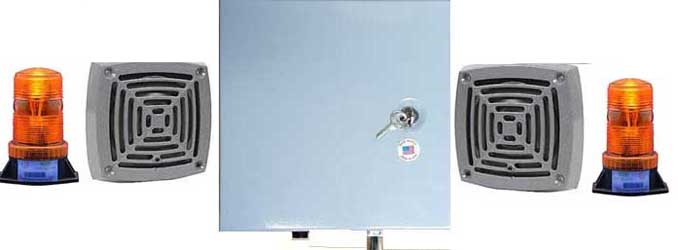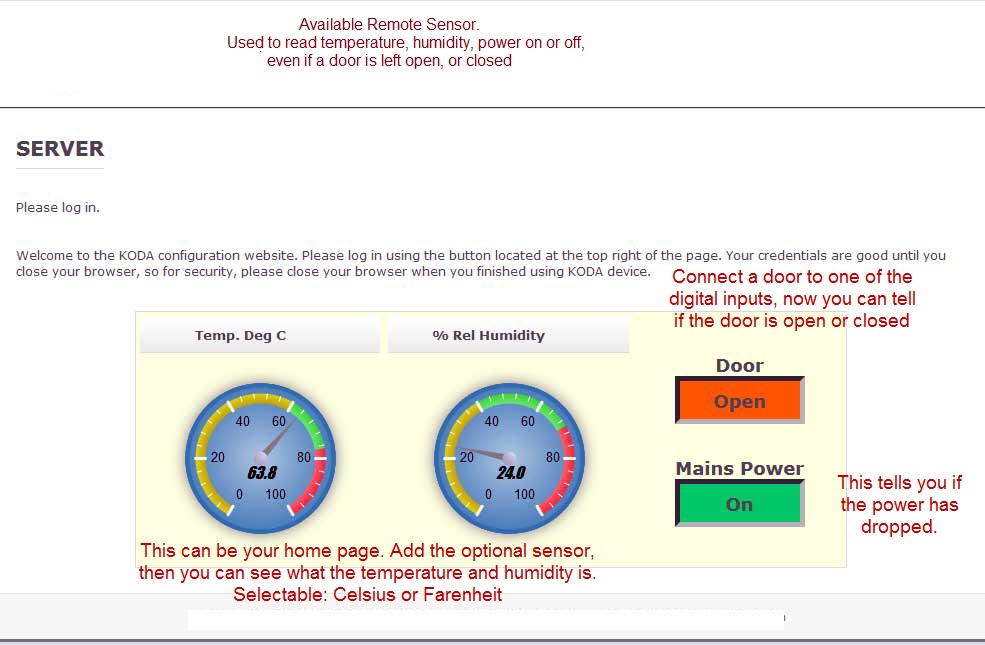Network ready scheduled work shift and class timer, and two loud buzzer horns
This is a turn-key solution. One plug to 110VAC, connect a CAT5 cable to your network
Download the software and follow the directions.
Lifetime USA telephone technical support is included.
Shown with optional amber strobe alerter lights

Comes pre-wired to plug into your wall and into your network
Includes an electrical junction box, 10 amp relay, 110VAC output
Up to 500 events per day, 7 days a week.
Comes wired for one circuit, upgrade to two, upgrade to 24VAC low voltage output.
Software and schedules are in the device, not on your computer.
Synchronizes the time with the NTP (Naval) web clock
Do you have a web-hosted or NTP synchronized time clock or master clock system?
If you do, you can synch this buzzer system to the same time source; they would be exactly the same.
July 5, 2018 more to know:
A Fire Station Siren is 106 decibals. Our bells and buzzers are typically 98 to 102.
This has been going on for years: People keep asking "How loud are your bells?"
Unfortunately, it's like describing a dinner at a restaurant. It depends on the environment.
Is it an empty room like a gymnasium? Does it have lots of rooms, or lots of background noise like a woodworking shop? Is this a warehouse with lots of rows of shelving and boxes of fabric?
Bells and buzzers all seem to max out at 102db. 102db is very loud.
110db is extremely loud, check out the YouTube video below.
In our experience, installing 2 to 3 bells or buzzers is much more effective than just one. Put one by the timer, then run wire out the another, 50 to 100' away. It won't be louder, it will just be more likely to be heard above all the background noise.
So, yours truly did some research recently (2016), this is interesting,
Using an Android phone decibel app, this is what we found:
**A bedroom at night in the country, windows closed: 28 - 32 db
**A bedroom at night in the city with the windows closed: 42- 46 db
**Office environment, people chattering: 62db
**American Airlines 737 inside. just behind the wing during takeoff: 86db
**Same jet, landing with the reverse thrusters on: 88db That ROAR you hear..
**Same jet, cruising for 3 hours, it's 82 to 86db. That's (partially) why flying is so tiring.
Shop buzzer's: 102db (Edwards, the ones we sell)
Other brands "hum" at 82 to 86.
Our bells test out at 98 to 103db depending on voltage
It seems that no one offers anything louder than 103db, unless it goes on a train, ocean liner, or fog horn. In some cases loudspeakers are used on farms; we don't have them, but our equipment will ring them. This is 110db, a train horn on an obnoxious person's pickup truck. In a working environment, this would clearly cause accidents.
https://www.youtube.com/watch?v=TiWNw0A1Ijg&feature=related
More bells or horns does not make it louder, it just makes it more pervasive - easier to hear through the machinery, across the rooms, over conversations and running equipment like compressors, lifts, packing tape, all that.
Optional add-on sensor tells you the temperature, humidity, even if the door is open or if the power has gone out!
Test the software for yourself, call us for the link and passwords.
